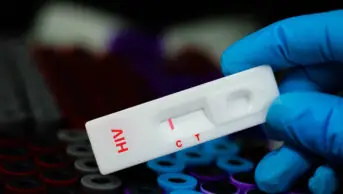He viewed the certificate for the first time; the pristine parchment bearing a crest, signatures of officials and his name. It proclaimed him to be a pharmacist. It represented so much study and so much sweat. To keep his certificate pristine, he had it framed. The first time that he hung it upon the wall, pride swelled within him.
THE WORLD CHANGED
He and his certificate grew older together and the world changed. He had qualified with a diploma,
subsequent pharmacists gained bachelors, and then masters, degrees. At first, he calculated using logarithms and anti-logarithms, then used a bulky, expensive calculator powered by the mains producing a glowing red display. Today, calculators are slim, almost disposable, solar powered, with liquid crystal displays. Some study areas waned, while others, such as clinical pharmacy and behavioural science, waxed.
The moon waxed full and the pharmacy was deserted, when a “Bang!” had rattled the certificate within its frame. A brown liquid splashed upon the glass, trickled down through the crack between glass and frame, a single drop staining that certificate’s bottom left corner. That stain included ammonium bicarbonate, chloroform and ipecacuanha from two, 80-ounce Winchester stock bottles. In the summer heat, the contents of one had fermented. Pressure shattered the bottle, that, in turn, shattered its neighbouring Winchester. Brown liquid coated every dispensary surface and the air reeked of liquorice and aniseed.
Once, the pharmacist completely removed his certificate from its frame. An employer had demanded sight of the original certificate, not just a copy. The pharmacist did not want to carry the bulky frame, so rolled up the certificate tightly. However, the certificate had a memory and afterwards, it remembered: regular ridges punctuated its smoothness.
GATHERING DUST
Gradually, the frame of that certificate gathered dust. When the dust became too obvious, it was dusted. It then collected fresh dust and was dusted, time and time again. In 1986, certificate and pharmacist suffered, fleetingly, traces of a short-lived radioactive coating, including iodine-131 and tellurium-132, from the explosion at Chernobyl.
In 1988, the pharmacist attached a plaque to the frame’s bottom proclaiming “Royal Pharmaceutical Society of Great Britain” — the Pharmaceutical Society had inserted “Royal” into its title. The Society headquarters had also moved to Lambeth, but it remembered its roots in Bloomsbury and its chartered objectives. What counted as respectable, professional clothing, hair length, speech and other behaviour, changed. In the wider world, humans mapped their genetic code and walked upon the moon.
MICROSCOPICAL CHANGES
Meanwhile, change also occurred within the microscopical world of the certificate, the outside world invaded. Tiny insects squeezed through the crack between frame and glass, crept on to the paper and died, littering it with black corpses that gradually became desiccated. Every few years, the pharmacist removed the paper and, with his fingers, brushed off their bodies; they felt gritty against the smooth paper. Their body juices had left yellow spots. Microscopical “bookworms” feasted upon those spots and the cellulose fibres of the paper itself; it became weakened and brittle.
Once, as he transferred the certificate between pharmacies, the rain poured down. Although a plastic bag protected the certificate water trickled into the plastic bag, collecting into a pool. Three drops oozed through the frame, wetting the certificate’s base. It behaved as chromatographic paper. The water crept upwards by capillary tension, scouring some of the crevices of the frame, sweeping upwards the flotsam of decades of dust. When it dried, a dark, high-tide mark remained. There, mildew flourished.
By now, the whole certificate, especially the border, had yellowed, some parts displaying the brown of lignin. The paper had been fabricated from wood pulp containing lignin that bleaching reduced to colourless compounds; decades of atmospheric oxidation had reversed that process. Moreover, acid hydrolysis, encouraged by moisture and atmospheric pollution, had split the long cellulose molecules. The paper smelt musty — what a deterioration from the delightful, “new book” smell, when it had first arrived.
Sometimes, the certificate was in direct sunlight, the paper cooking inside its portable glass greenhouse. Periodically, agencies and other organisations required copies of the certificate; the pharmacist photocopied it, so bombarding it with ultraviolet radiation. Those factors contributed to the ink of the signatures fading. The officials who had signed had by then retired.
The pharmacist named on the certificate was also showing signs of wear: crinkly skin and hair speckled with grey. He had become shorter but wider. Decades of gravity had compressed his intervertebral discs and his abdominal muscles, once taut, had weakened allowing his waistline to expand. In those ways, he and his certificate grew older and changed together. However, his notion of striving to provide altruistic service did not moulder or change. He always believed he should do his best to put his patients first; they were, by definition, vulnerable.
But the public, including patients, changed. The esteem in which they held professions, such as pharmacy, fell. Once, the public had accepted professions at their own values — as beacons of altruistic service; professions became just another job where workers’ motivations were primarily self-seeking. In parallel with this, the public, instead of automatically following professionals’ advice, increasingly challenged it. The public became more educated, had higher expectations and were informed by consumerist movements.
RETIREMENT
By now, our pharmacist’s life had also moved on. He was semi-retired and only hung his certificate on the wall during occasional locums.
It was then, that another pharmacist viewed her certificate for the first time; the pristine parchment bearing a crest, the signatures of officials and her name. It proclaimed her to be a pharmacist. It represented so much study and so much sweat. To keep her certificate pristine, she had it framed. The first time that she hung it upon the wall, pride swelled within her . . .

